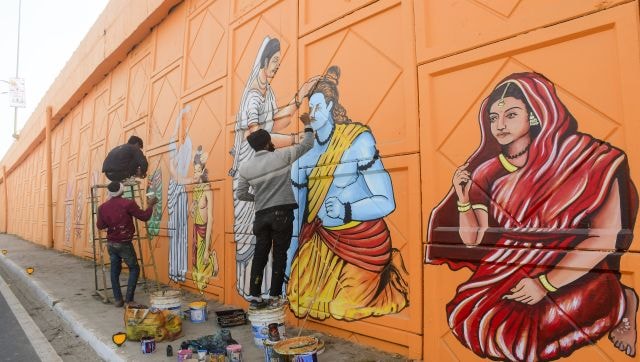We are days away from the historic Ram Mandir launch in Ayodhya, which is scheduled for 22 January. On this day, the idol of Lord Ram Lalla will be installed at the temple after the consecration ceremony.
And ahead of D-Day, which will see several VVIPs and celebrities from across the world in attendance, preparations are in full swing. On Tuesday (9 January), Uttar Pradesh chief minister Yogi Adityanath inspected the temple site.
However, what exactly is a pran pratishtha ceremony? Why is such a ritual performed? We get you these answers and more.
What is pran pratishtha?
Pran pratishtha is a sacred Hindu ritual, which is performed to invoke a deity into an idol, making it sacred or divine. The term ‘pran’ translates to life whereas pratishtha means ‘establishment. Hence pran pratishtha means ‘establishing of the life force’ or bringing the ‘deity to life’.
Once the pran pratishtha is completed, the idol turns into a deity, which, in turn, can accept prayers and grant boons to worshippers.
What are the rituals before the pran pratishtha?
To bring the ‘deity to life’, several rituals need to be followed. According to experts, the number of steps involved depends on the scale of the ceremony.
For the Ram Mandir, the temple trust – Shri Ram Janmabhoomi Teerth Kshetra – said that the consecration ceremony would be preceded by seven days of ritual starting on 16 January. On the first day, the priests will begin with touching the Saryu river embankment, starting “Vishnu Puja” and conducting “Gau Dan”.
On 17 January, the selected Ram Lalla idol will be taken on a ‘shobha yatra’. It is here that the idol will be cheered by onlookers, transferring their devotion into it. In the following days, other pujas will be carried out, including the ‘nav grah shanti hawan’, which is performed to “please all the planets”.
On 20 January, the temple’s sanctum sanctorum will be washed with the waters from the Saryu river, followed by the washing of Ram Lalla’s throne.
How is the pran pratishtha ceremony conducted?
On the day of the pran pratishtha ceremony, the idol is first brought to the temple. Until then, it is submerged in various materials – water and grain.
On being brought to the temple, the idol is then bathed in milk and various fragrances are applied. It is then placed in the sanctum sanctorum and placed in the eastward direction. According to Hindu customs, all idols should face the east, as it is said to have positive energy, and also the sun rises in that direction.
After installing it in the right place, the priests start singing the hymns and mantras and performing rituals.
The final stage is the opening of the statue’s eyes and this ceremony is nuanced. According to an Indian Express report, the ceremony includes the application of anjan – similar to kohli – around the deity’s eyes, with a gold needle. This process is carried out from behind, as it is believed that if one looks into God’s eyes the moment they open, their brilliance can be too much to take.
Once this is done, the idol is believed to have been brought to life and can be prayed to.
Also read: ‘Mauni Mata’: Meet the woman who will break a 30-year ‘vow of silence’ after Ram temple opening
How long does the pran pratishtha last?
It is said that once the pran pratishtha is completed, it remains for eternity.
What’s special about D-Day?
In light of this historic day and anticipating huge crowds, the state of Uttar Pradesh has announced a holiday for all schools and colleges. Moreover, Chief Minister Adityanath said that there would be no sale of liquor across the state on 22 January.
All government buildings will also bedecked on the day and a firework show has also been planned for that day.
Prime Minister Narendra Modi will attend the consecration of the Ram Mandnir in Ayodhya. Invitation cards for the ceremony have been sent out to over 7,000 guests, including 3,000 VVIPs, including priests, donors, and several politicians.
In the meantime, the temple is also getting ready for the big moment. A 620 kg bell, originating from Tamil Nadu, has been installed at the religious site earlier last week and on Tuesday, the first swarn dwar (golden door) was installed. Reports say that as many as 13 golden doors would be installed in the Ram Temple within the next three days.
The Ram Mandir, constructed in the traditional Nagara style, is a three-storied shrine, measuring 380 feet in length (east-west direction), 250 feet in width, and 161 feet in height. It has a total of 392 pillars and 44 doors. It features five Mandaps (halls) – Nritya Mandap, Rang Mandap, Sabha Mandap, Prarthna and Kirtan Mandaps.
With inputs from agencies
Link to article –
Ram Mandir: What is the ‘pran pratishtha’ ceremony? Why is it important?





